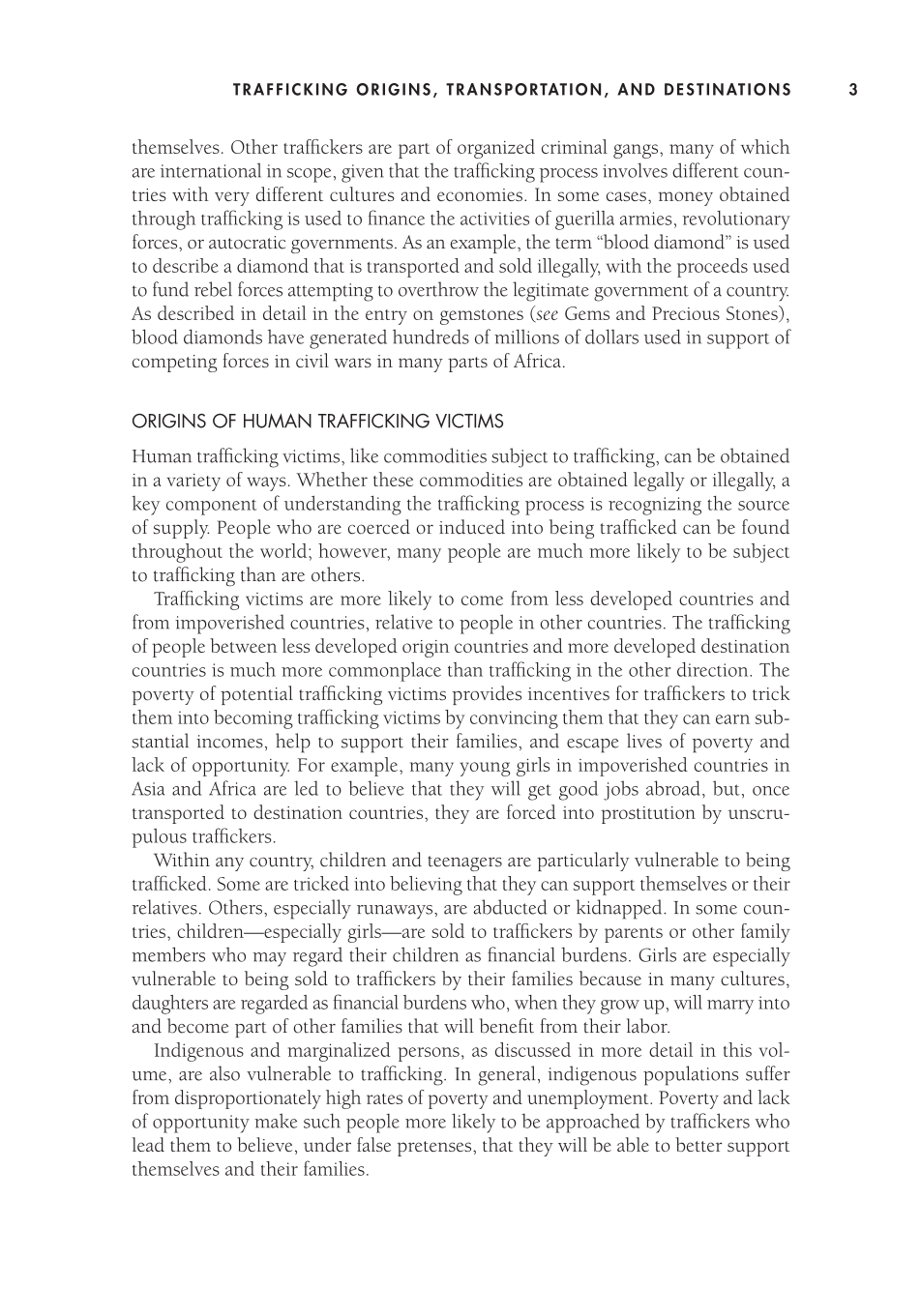trafficking Origins, Transportation, and Destinations 3
themselves. Other traffickers are part of organized criminal gangs, many of which
are international in scope, given that the trafficking process involves different coun-
tries with very different cultures and economies. In some cases, money obtained
through trafficking is used to finance the activities of guerilla armies, revolutionary
forces, or autocratic governments. As an example, the term “blood diamond” is used
to describe a diamond that is transported and sold illegally, with the proceeds used
to fund rebel forces attempting to overthrow the legitimate government of a country.
As described in detail in the entry on gemstones (see Gems and Precious Stones),
blood diamonds have generated hundreds of millions of dollars used in support of
competing forces in civil wars in many parts of Africa.
ORIGINS OF HUMAN TRAFFICKING VICTIMS
Human trafficking victims, like commodities subject to trafficking, can be obtained
in a variety of ways. Whether these commodities are obtained legally or illegally, a
key component of understanding the trafficking process is recognizing the source
of supply. People who are coerced or induced into being trafficked can be found
throughout the world; however, many people are much more likely to be subject
to trafficking than are others.
Trafficking victims are more likely to come from less developed countries and
from impoverished countries, relative to people in other countries. The trafficking
of people between less developed origin countries and more developed destination
countries is much more commonplace than trafficking in the other direction. The
poverty of potential trafficking victims provides incentives for traffickers to trick
them into becoming trafficking victims by convincing them that they can earn sub-
stantial incomes, help to support their families, and escape lives of poverty and
lack of opportunity. For example, many young girls in impoverished countries in
Asia and Africa are led to believe that they will get good jobs abroad, but, once
transported to destination countries, they are forced into prostitution by unscru-
pulous traffickers.
Within any country, children and teenagers are particularly vulnerable to being
trafficked. Some are tricked into believing that they can support themselves or their
relatives. Others, especially runaways, are abducted or kidnapped. In some coun-
tries, children—especially girls—are sold to traffickers by parents or other family
members who may regard their children as financial burdens. Girls are especially
vulnerable to being sold to traffickers by their families because in many cultures,
daughters are regarded as financial burdens who, when they grow up, will marry into
and become part of other families that will benefit from their labor.
Indigenous and marginalized persons, as discussed in more detail in this vol-
ume, are also vulnerable to trafficking. In general, indigenous populations suffer
from disproportionately high rates of poverty and unemployment. Poverty and lack
of opportunity make such people more likely to be approached by traffickers who
lead them to believe, under false pretenses, that they will be able to better support
themselves and their families.

































































































































































































































































































































































































